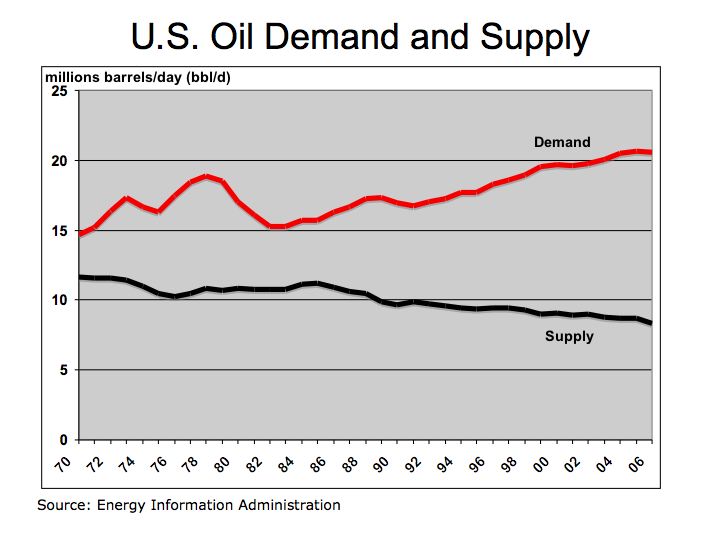Can Canadian Tar Sands rescue our appetite for Oil?
Oil prices remain at historically high levels and threaten our economy with higher home heating and transportation costs. With a lot of rhetoric over Peak Oil as well as claims that Tar Sands offer a viable substitute for oil, let’s examine a couple of facts to determine the feasibility and sustainability of supplementing our current demand for oil with tar sands.
According to Bureau of Land Management’s on line resource for Oil Shale and Tar Sands, tar sands are a mixture of clay, sand, water, and bitumen, which is liquid hydrocarbon oil like substance. Tar sands consist of about 10%-to-15% liquid hydrocarbon and an 80%-to-85% mixture of mineral water, clay, and sand, and 4%-to-6% water. It takes about two tons of tar sands, which are extracted, mainly through strip mining, and processed to produce one barrel of oil.
According to Alberta Energy, sand oil production was at 966,000 barrels per day (bbl/d) in 2005 and is expected to reach 3 million bbl/d by 2020 and possibly even 5 million bbl/d by 2030. Alberta’s sand oil reserves at 1,704 million barrels, but proven and extractable using current technology, the estimate is 175 billion barrels which is second to Saudi Arabia’s 260 billion according to CBS 60 Minutes
However, with productions level of Alberta’s sand oil at 3 or even 5 million barrels per day, it represents just 4%-to-6% of the world’s oil needs. The U.S. consumed an average of approximately 20.5 million bbl/d in 2006 as indicated by the Energy Information Administration.
If it takes two tons of tar sand to produce one barrel of oil, the ability to increase production to 3 million barrels per day would amount to mining of 2.1 billion tons of tar sand. Total coal mining in the U.S. for 2006 was 1.1 billion tons according to EIA Coal Data At 5 million barrels per day, equivalent to about 6% of the world oil production in 2006, would amount to 3.6 billion tons of tar sand. That would be significantly larger than the 1.3 billion tons total world production of Iron ore in 2005 Info Comm. That appears to be a lot of mining for a 6% increase of oil on the world market. The added tar sand oil would make a significant contribution to U.S. oil needs.
According to the Canadian Association of Petroleum Producers capital investment in Alberta’s oil sands amounted to $10.4 billion in 2005. That’s not a bad investment considering that even with production levels of 1 million barrels a day, revenue potential could be $29 billion a year with oil over $80 per barrel.
Figure 1 U.S. Oil Supply and Demand

Given the that tar sands only provide a fraction of our energy requirements and is burdened by carbon emission even during extraction, a commitment to solar energy fuel cells may offer a better return on investment. The bottom line is oil derived from tar sand is only a supplement to our energy demands, it’s non-renewable, adds to carbon emissions, requires extensive processing, and must be mined.
Related Posts